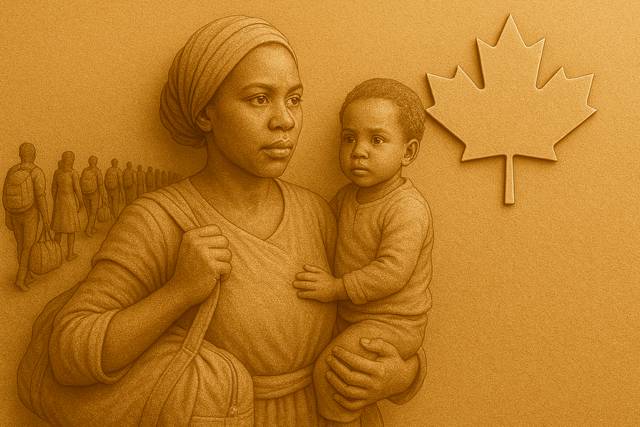Caribbean Canadians

Source: The Canadian Encyclopedia | Updated by Channon Oyeniran
Overview
Caribbean immigration to Canada began in the late 1700s and continues today. According to the 2016 census, 749,155 Canadians reported Caribbean origins, with most arriving after the 1970s.
What Is the Caribbean Region?
The Caribbean is made up of diverse islands and nations, grouped into three main regions:
-
Greater Antilles: Cuba, Jamaica, Haiti, Dominican Republic, Puerto Rico
-
Lesser Antilles: Islands like Barbados, Grenada, St. Lucia, and Antigua
-
Isolated Islands: Bahamas, Turks and Caicos, Trinidad and Tobago, Aruba, Curaçao, and Bonaire
Even though Bermuda and Guyana aren’t part of the Caribbean geographically, they are often included because of deep cultural and historical ties.
Languages spoken include English, French, Spanish, Haitian Creole, and Jamaican Patois.
Immigration History
1796–1960: Early Waves
-
550+ Jamaican Maroons arrived in Nova Scotia in 1796.
-
Small groups of workers came from Jamaica and Barbados to Cape Breton mines.
1960s–1970s: A Turning Point
-
Immigration increased after Canada's multiculturalism policy in 1971.
-
The West Indian Domestic Scheme (1955–67) brought in women as domestic workers.
-
Jean Augustine, Canada’s first Black woman MP, entered through this program.
1970s–Present
-
The introduction of the points-based system in 1967 opened the doors to more skilled immigrants.
-
Caribbean immigration peaked in 1973–74, but declined during the late 1970s recession.
-
Caribbean Canadians now primarily reside in Toronto, Montreal, and other urban areas in Ontario and Quebec.
Language and Settlement
-
English-speaking Caribbean immigrants tend to settle in Ontario.
-
French-speaking Haitians primarily settle in Quebec.
-
Language often influences where Caribbean Canadians live and work.
Culture & Festivals
Caribbean Canadians have introduced vibrant cultural traditions to Canada:
-
Jamaica: Rastafarianism & Reggae
-
Trinidad & Tobago: Carnival, Calypso, Soca
Major Festivals Include:
-
Toronto Caribbean Carnival (Caribana)
-
Carifiesta (Montreal)
-
Carifest (Calgary)
-
Cariwest (Edmonton)
-
Jerkfest, Irie Music Fest, Durham Caribbean Festival, and more
Caribbean Media in Canada
Radio: G 98.7, Carib101, Radio Haiti, CJTR, Voix Tropicale
TV: Afroglobal TV, Caribbean Vibrations, WIN Caribbean
Print: Pride News, Montreal Community Contact, Toronto Caribbean Newspaper
Religion
Religion plays a major role in Caribbean life:
-
Most are Christian (Anglican, Pentecostal, Catholic, Seventh-Day Adventist)
-
Some follow Rastafarianism or Islam
-
Younger generations born in Canada may be less religious
Political and Social Activism
Caribbean Canadians have long fought for equality:
-
Formed the Order of Sleeping Car Porters for railway workers
-
Founded groups like the Congress of Black Women of Canada and Black United Front (NS)
-
Protested against racism in schools, housing, and employment
-
Supported political activism in their home countries (e.g., Haitian opposition to the Duvalier regime)
Community Organizations
Some key groups include:
-
Ontario Black History Society (OBHS)
-
Jamaican Canadian Association
-
Trinidad and Tobago Association of Ontario
-
Caribbean Community Council of Calgary
-
Black Lives Matter Canada
Canada–Caribbean Relations
Canada maintains strong diplomatic and economic ties with CARICOM countries in areas like trade, tourism, security, and education.
Notable Canadians of Caribbean Origin
-
Jean Augustine – First Black female MP and Cabinet Minister
-
Celina Caesar-Chavannes – Former MP
-
Lincoln Alexander – Ontario’s first Black Lieutenant-Governor
-
Donovan Bailey & Bruny Surin – Olympic gold medalists
-
Michäelle Jean – Former Governor General
-
Afua Cooper – Historian, poet, and academic